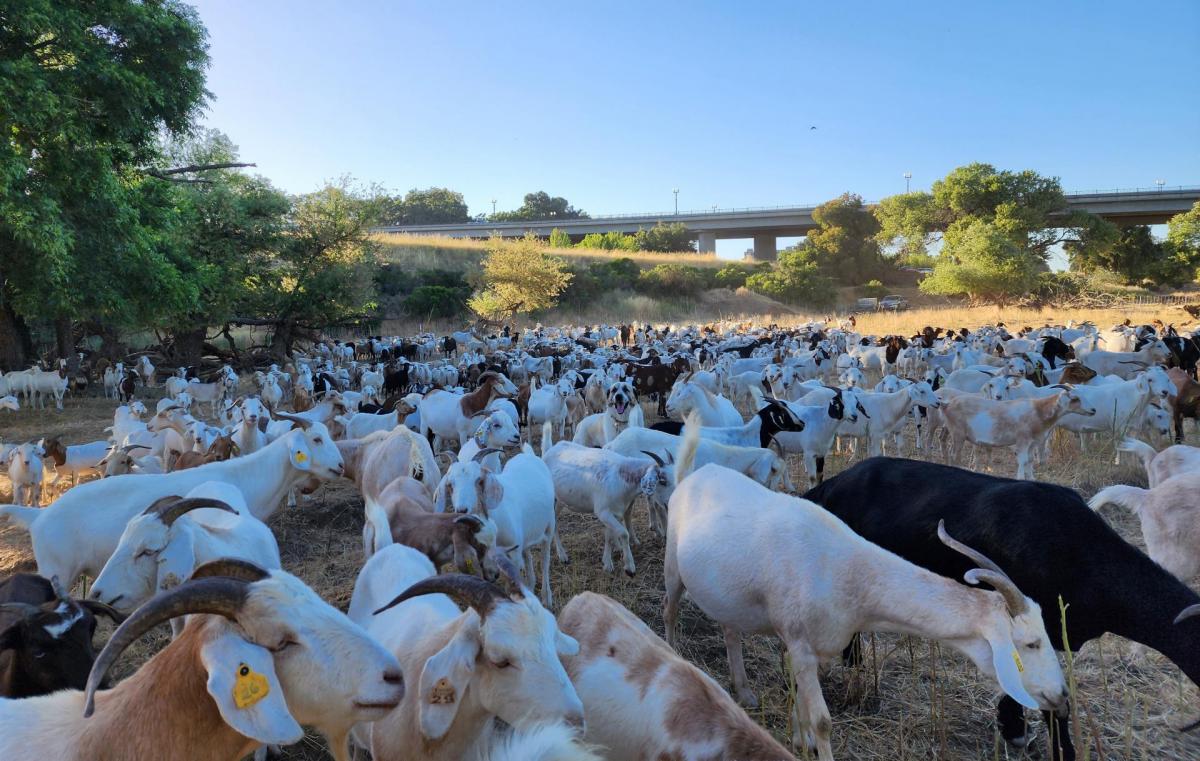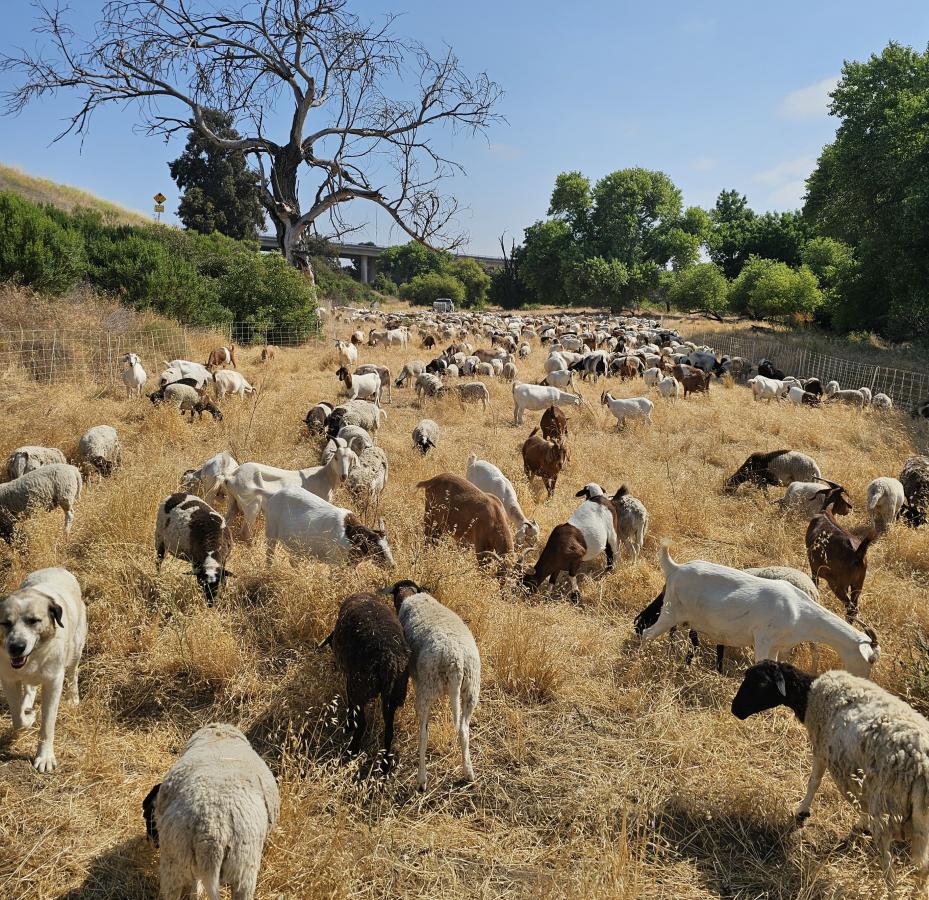Paso Robles’ fire risk mitigation strategy is nothing to kid about
Jackie Krentzman is a Bay Area-based writer and editor.
If you drove through Paso Robles this past May, you might’ve seen a group of people sitting in lawn chairs by the Salinas River eating their lunch — while watching hundreds of goats eat theirs.
The goats’ lunch is the underbrush and overgrowth in the Salinas riverbed. For the last five years, Paso Robles has been working with a local company, The Goat Girls, to bring in goats and sheep to help create fire breaks and reduce fire hazards through grazing.
“We invite the community to come watch the goats do their work and ask questions,” says Jay Enns, the fire department battalion chief. “Kids come down with their parents, and drivers smile and honk at the goats because they are happy to see them.”
Paso Robles residents aren’t just happy because the animals are cute. The animals are performing a valuable service. Beginning in 2018, the number of fires and acreage burned began increasing along the riverbed, which stretches three miles through the city. The riverbed, which hadn’t been cleared of vegetation in decades, was chock full of thick underbrush and dead branches. Years of encampments and cooking fires made the area even more vulnerable to wildfires.
“As the climate has shifted, and we’re drawing down our water tables that keep riparian trees healthy and green, the dead and downed trees and the flash fuels are becoming a hazard to our communities in ways we never imagined 30 years ago,” says biologist LynneDee Althouse, who works with the city on its fuel management plan as the CEO and president of Althouse & Meade.
In 2019, the city proclaimed a local emergency, allowing it to temporarily bypass some of the state’s environmental laws and began clearing brush with heavy equipment. It helped, but it wasn’t enough to remove the decades of undergrowth.
When a fire in June 2020 raced through the riverbed and jumped into a neighborhood, destroying two homes and several outbuildings, the city decided it needed a more permanent fix. Paso Robles issued another emergency declaration to create fire breaks in the riverbed’s open space. It also began drafting a five-year flood control and fire fuel load reduction plan.
The city began a pilot program with The Goat Girls in 2020. After the heavy equipment and ground crews clear out the large debris, the goats stand on their rear legs to chomp the higher brush, and the sheep chow down on the ground-level grasses and weeds.
“That first year, they grazed over 15 acres and made a big impact,” Enns says. “A fire in the grazed area that in the past would have required five fire engines, a hand crew, and a bulldozer can be put out with just one engine, freeing up fire department resources for other emergencies.”
Beth Reynolds launched The Goat Girls in 2018, a few years after Cal Fire formally recognized prescribed livestock grazing as an effective fuel‐reduction tool. This year, the company used 700 goats and 700 sheep to clear 95 acres in Paso Robles along the Salinas riverbed. The city manages over 90% of the firebreaks in the riverbed through grazing.
Other elements in the state-approved five-year flood control and fire fuel load reduction plan include mechanical and manual vegetation removal and low-intensity prescribed burns. Paso Robles drafted the plan in conjunction with Althouse & Meade, which helped the city determine the priority areas and methods for fuel reduction. It also guided Paso Robles through the permitting process, monitors the effectiveness of the work, and conducts bird surveys to make sure natural habitats are not harmed.
The plan is working. In 2020, the year before it took effect, there were 120 fires burning 35 acres in the riverbed. In 2023, that number dropped to 85 fires, burning 1.5 acres.
Biologist LynneDee Althouse praises the city and fire department for being proactive and understanding the complexities of effective fire fuel management plans, which often require permitting from many state and regional agencies.
“It is hard to find those leaders who really want to make a difference and are willing to plow through the permitting hurdles because it’s not for the faint of heart,” she says.
In fact, Paso Robles’ vegetation management project is the first plan of its kind approved by the state water board for a riparian area. It has been so successful that the State Water Resources Control Board has adopted it as a template of sorts for firebreaks in cities and creeks, says Enns.
“Paso Robles is very good at wisely managing the available workforce and outside resources to make sure its fuel reduction efforts are efficient and cost-effective,” Reynolds says. “Jay and the city are very knowledgeable and proactive and have the rare ability to come up with a game plan to manage risk.”



